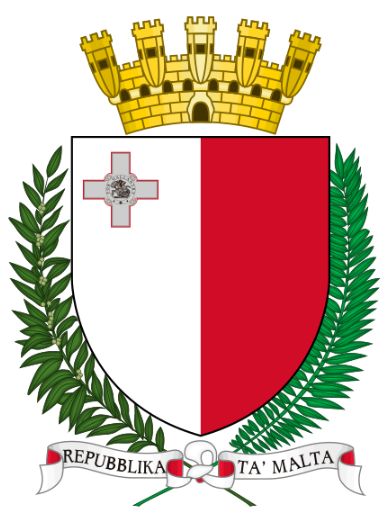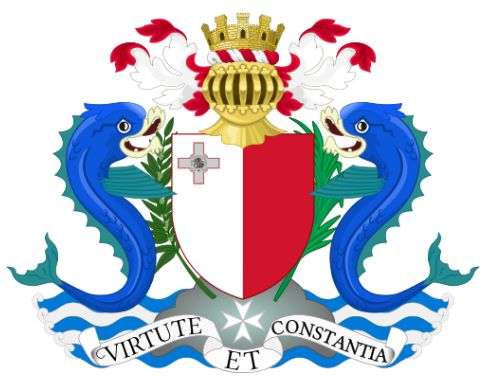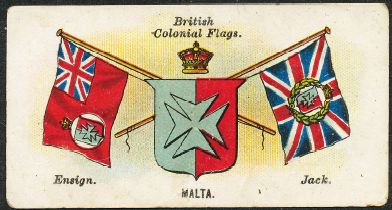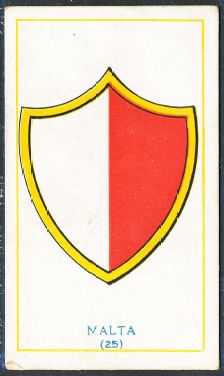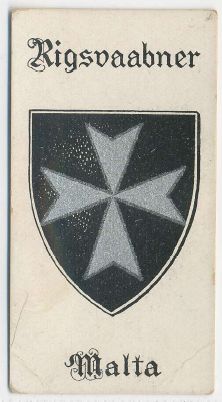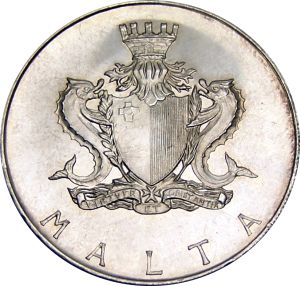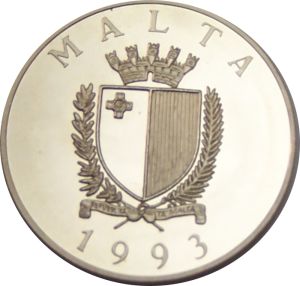National Arms of Malta: Difference between revisions
Knorrepoes (talk | contribs) m (Text replacement - "{|width="100%" style="color:black; background-color:#ffffcc;" |width="15%"|50 px|left |width="70%" align="center" |'''Heraldry of the World<br/>Civic heraldry of Malta''' |width="15%"|50 px|right |} " to "{{malta}}") |
Knorrepoes (talk | contribs) m (Text replacement - ".jpg|center]] ====Official blazon====" to ".jpg|center|Arms of {{PAGENAME}}]] ====Official blazon====") |
||
| Line 2: | Line 2: | ||
'''THE NATIONAL ARMS OF MALTA''' | '''THE NATIONAL ARMS OF MALTA''' | ||
[[File:malta.jpg|center]] | [[File:malta.jpg|center|Arms of {{PAGENAME}}]] | ||
====Official blazon==== | ====Official blazon==== | ||
Revision as of 10:06, 26 March 2016
Template:Malta THE NATIONAL ARMS OF MALTA
Official blazon
Origin/meaning
The arms of Malta are described by the Emblem and Public Seal of Malta Act 1975 as a shield showing a heraldic representation of the National flag of Malta; above the shield a mural crown in gold with a sally port and eight turrets (five only visible) representing the fortifications of Malta and denoting a City State; and around the shield a wreath of two branches: the dexter of Olive, the sinister of Palm, symbols of peace and tradition associated with Malta, all in their proper colours, tied at the base with a white ribbon, backed red and upon which are written the words "REPUBBLIKA TA' MALTA" (i.e. Republic of Malta) in capital letters in black.
The silver and red shield of Malta has been used for centuries and is derived from the flag of the island. The island was awarded the George Cross after the second world war. This cross, which is awarded only rarely, was granted to the whole population of Malta, as the island withstood 4 years of severe bombing by the Germans, but it was never conquered. It was the first time the Cross was awarded to a whole population. The cross was immediately placed on the arms and the flag of the (then) British colony.
When Malta achieved independence in 1964 the arms below were granted. The shield remained the same, but the two dolphins were added as supporters. The dolphins indicated that the new country is an island state. These arms were used until 1975, when the above arms were adopted.
Before independence a red or divided shield was used, with or without the Cross of the Knights of Malta.
| The arms on a British tobacco card, 1904 |
The arms on a British tobacco card, 1910 |
| The arms on a British tobacco card, 1917 |
The arms on a Danish tobacco card, 1920 |
| The old arms on a coin |
The new arms on a coin |
Contact and Support
Partners:
Your logo here ?
Contact us
© since 1995, Heraldry of the World, Ralf Hartemink 
Index of the site
